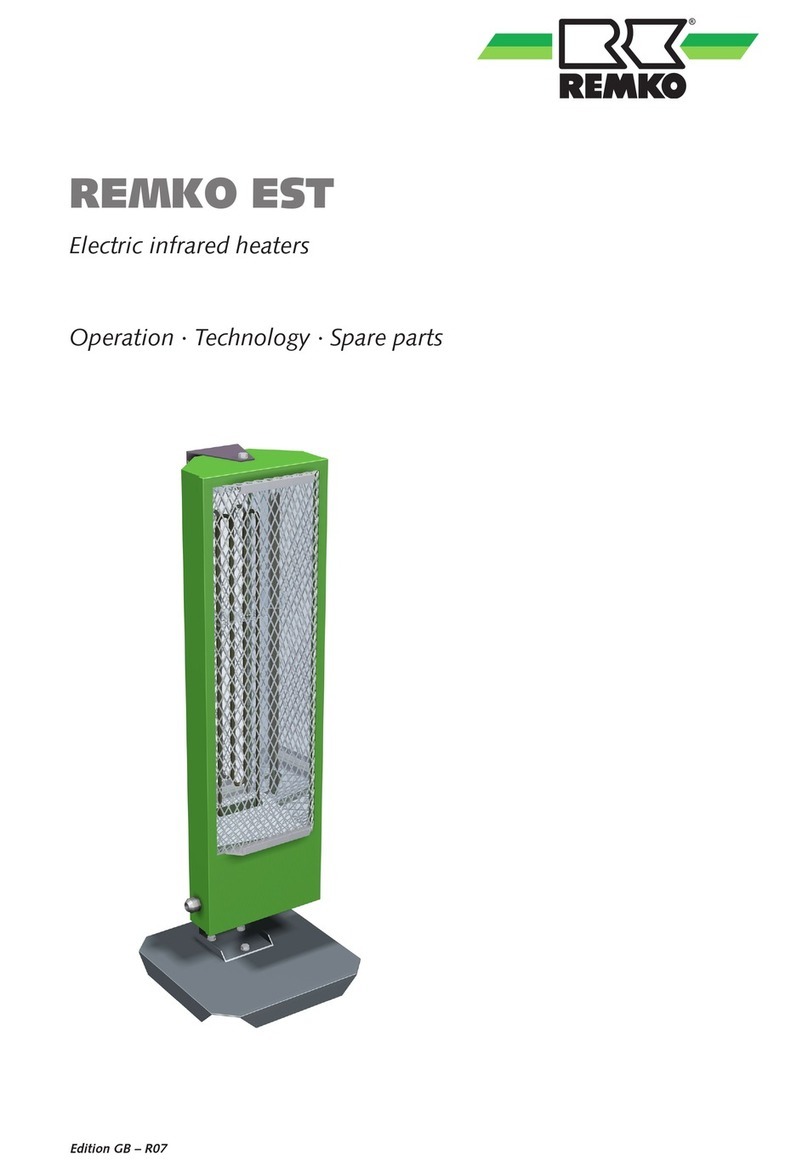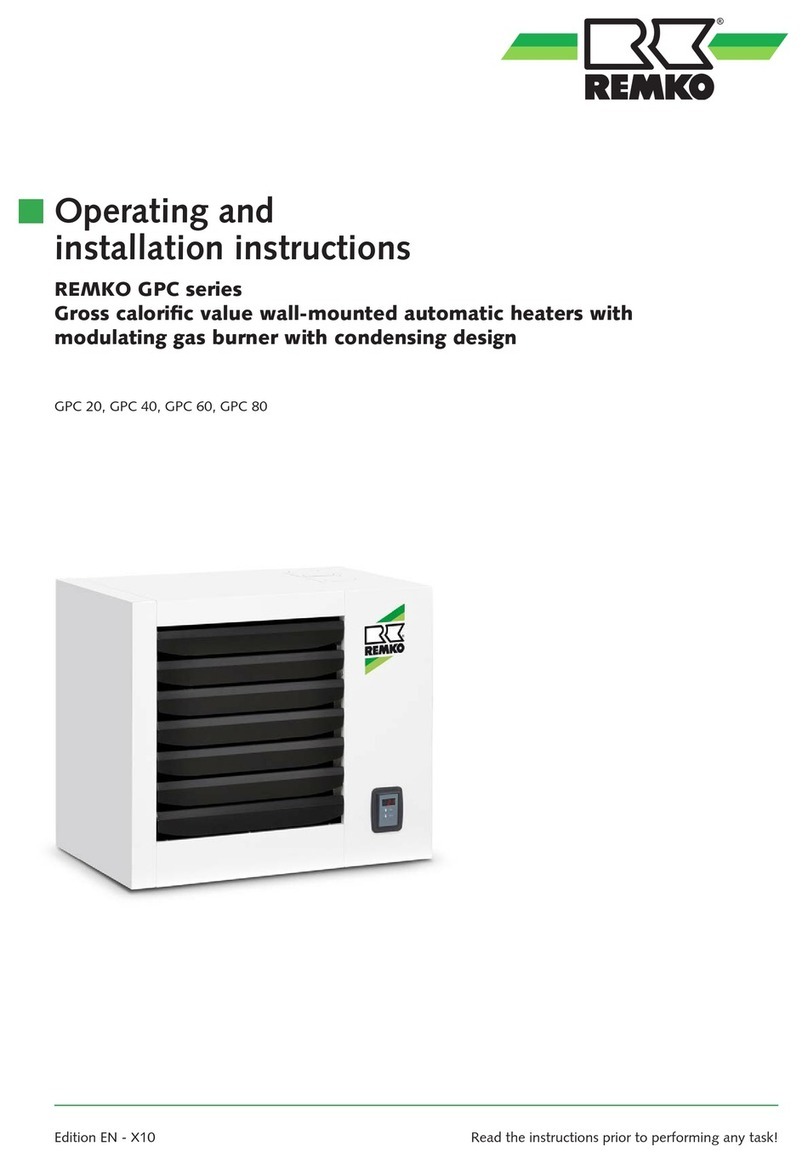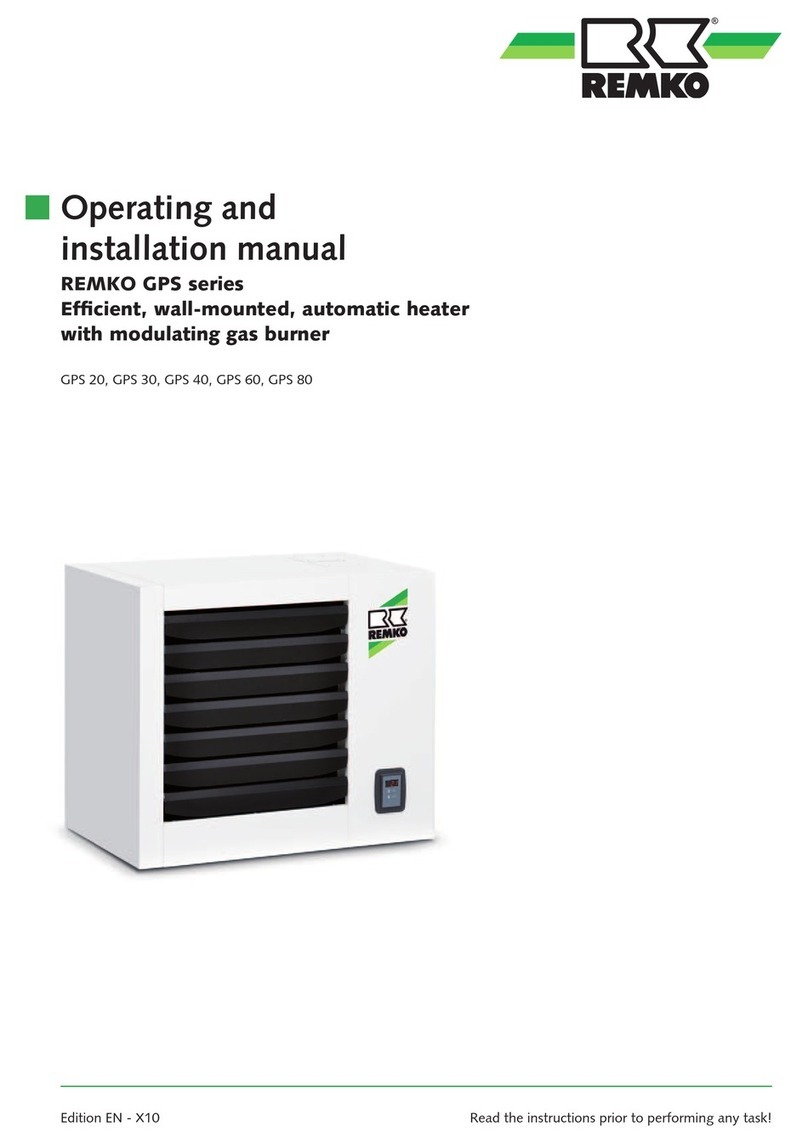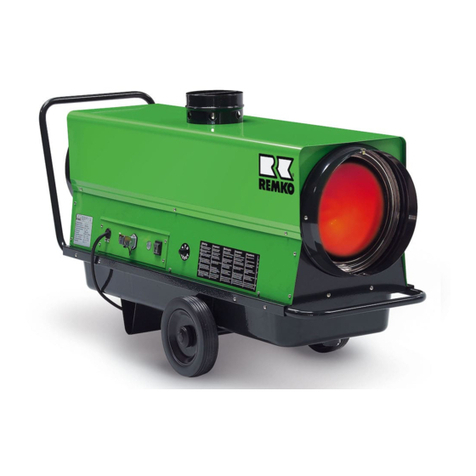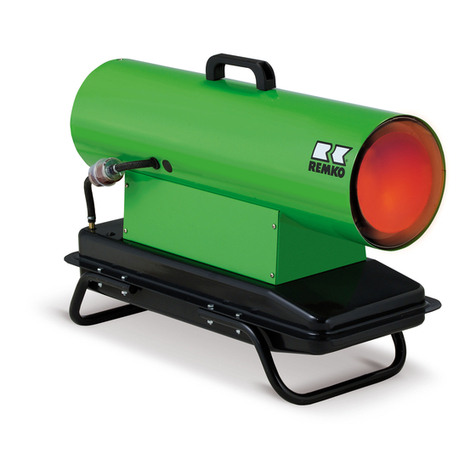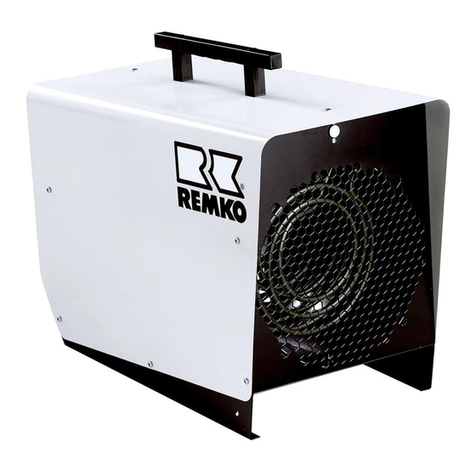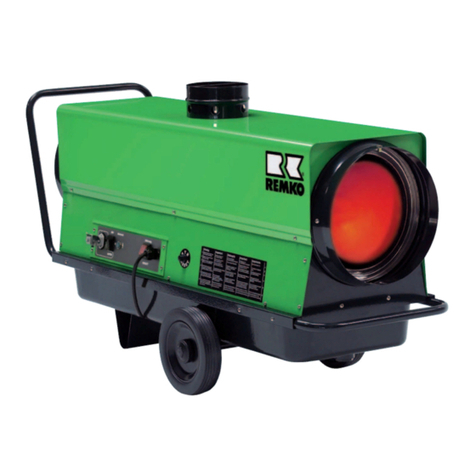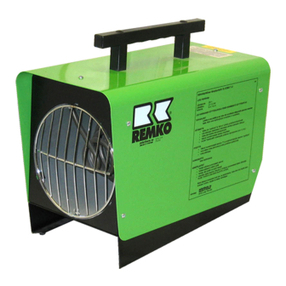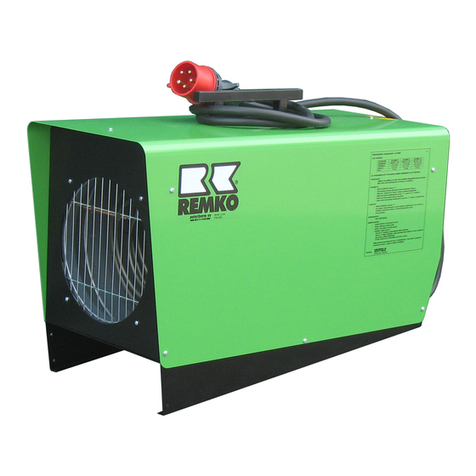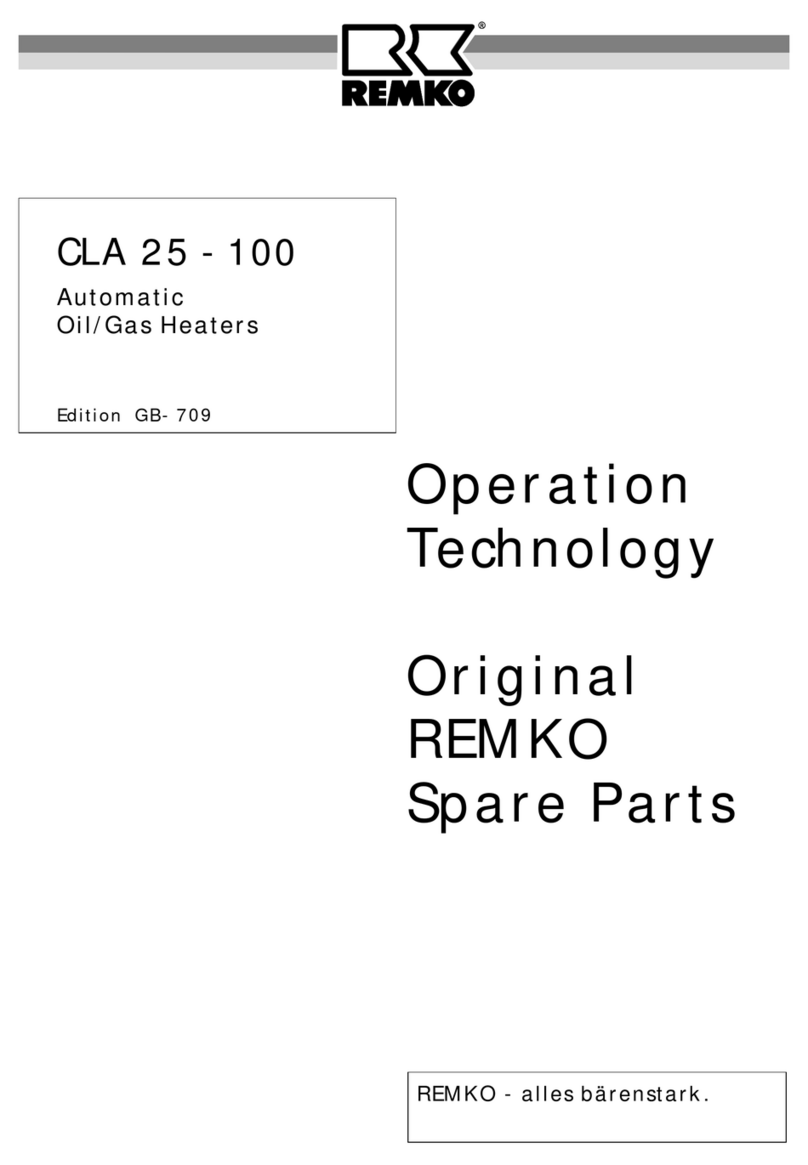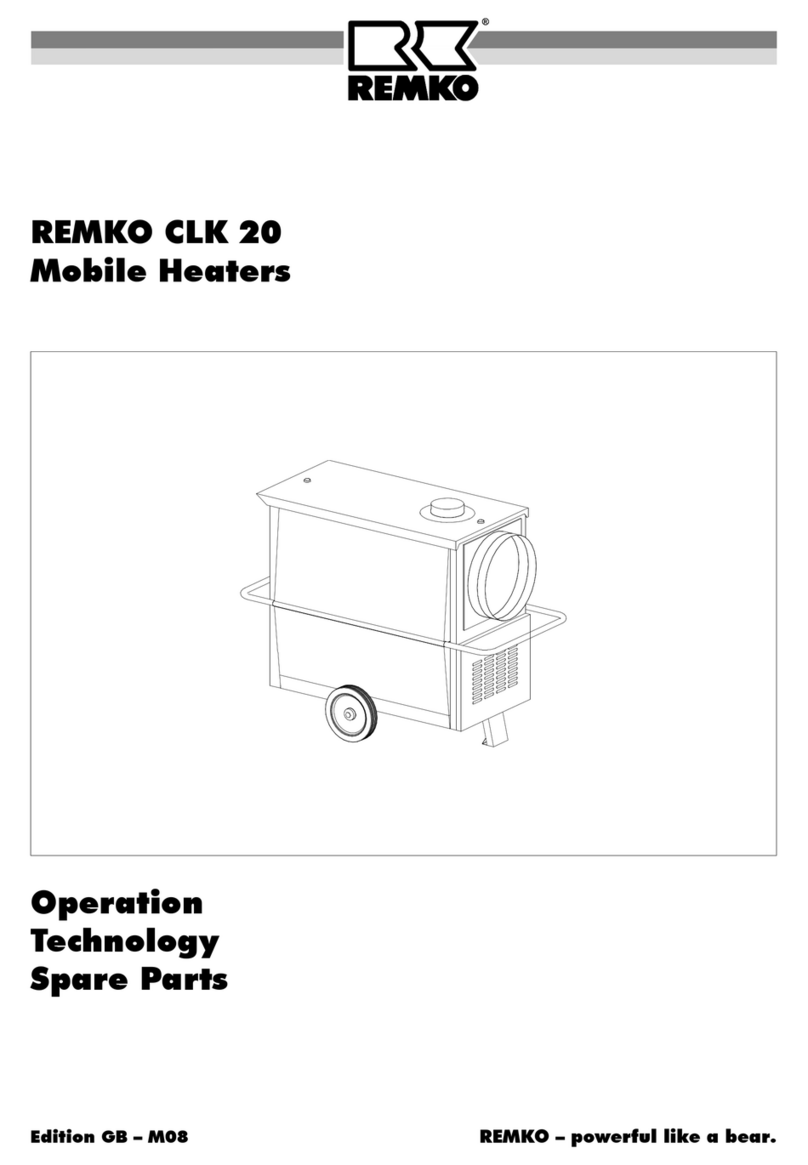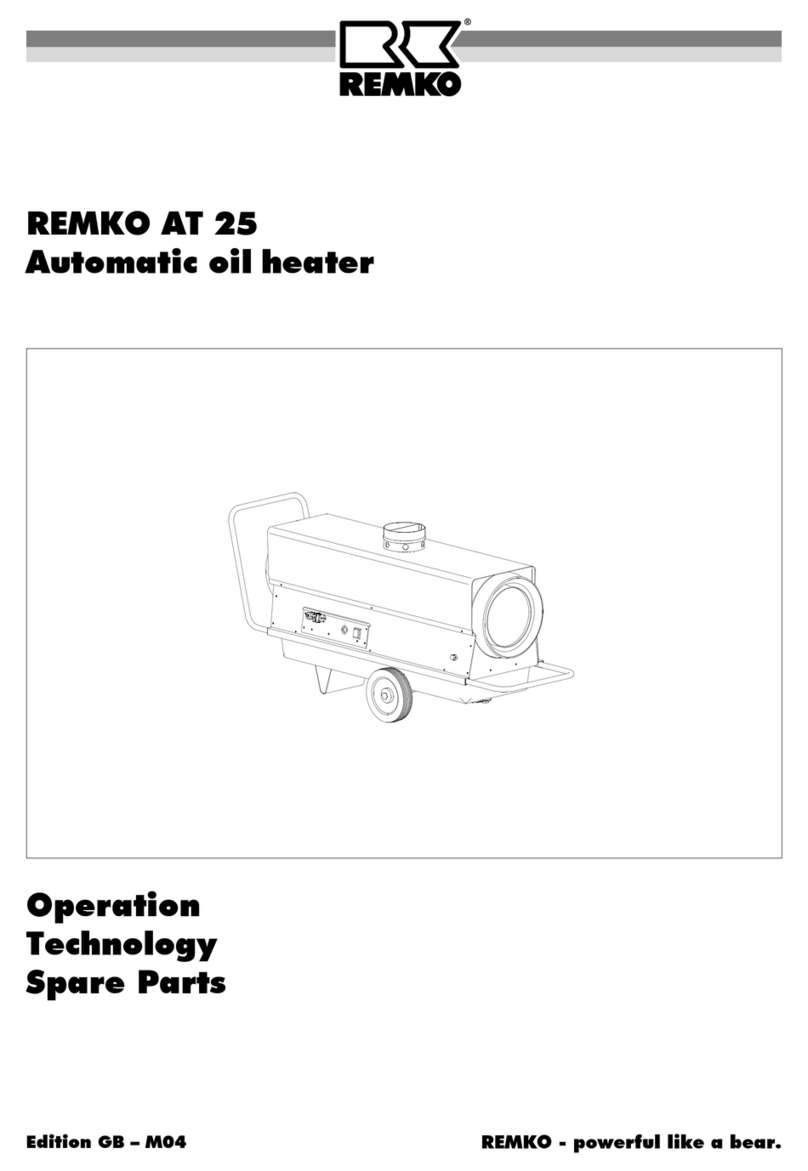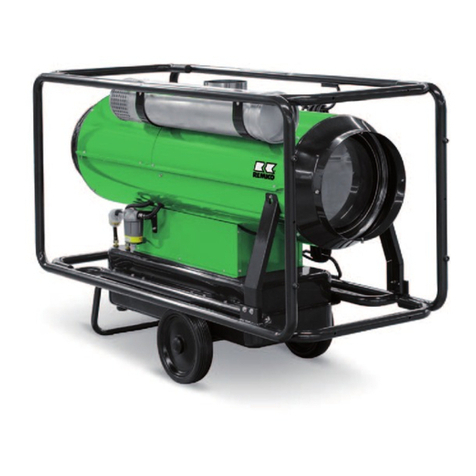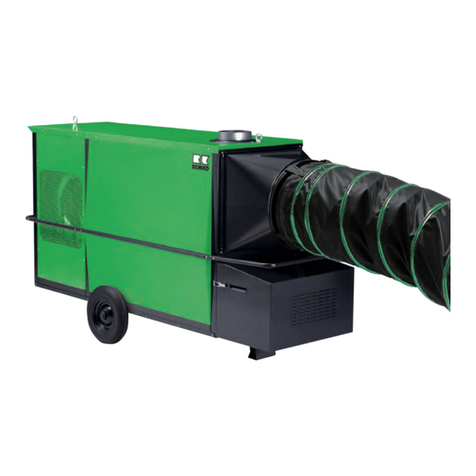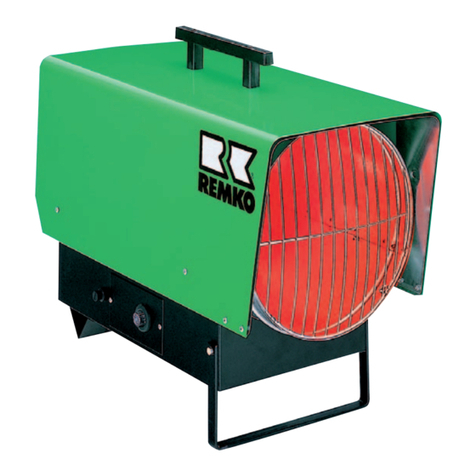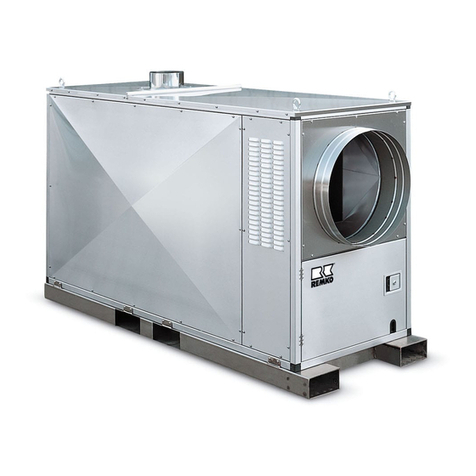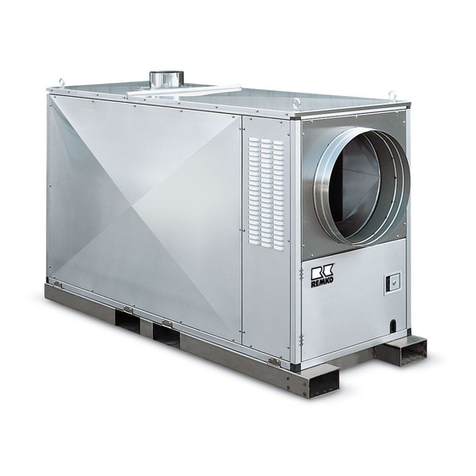
3
Safety Hints
When using this unit make sure always to observe the
applicable building and fire protection regulations as
well as the rules of the trade cooperative association.
lThe unit may be operated only by those persons who
have been instructed accordingly.
lThe unit is to be installed and operated in such a way
as to ensure that the employees are not endangered
by waste gases and radiation heat and that no fire
can break out.
lThe unit may only be installed and operated in
rooms, when the air rate fed to the unit is sufficient
for combustion.
lMake sure to install mobile liquid gas reservoir on a
solid ground and in a vertical position.
lLiquid gas reservoir may never be used in a lying po-
sition while the unit is operating (gas leakage in the li-
quid phase).
lThe unit may be operated only in well aerated rooms.
Persons may not stay permanently in the room where
the unit has been installed. Relevant prohibition signs
are to be fastened to the entrances.
lThe unit is to be installed and operated on a solid
non combustible ground.
lIt is to be ensured that no combustible objects/
materials can be sucked in.
lThe unit may not be installed or operated in in-
flammable and explosive surroundings.
lA safety zone of 1.5 m around the unit and a mini-
mum distance of 3 m at the unit’s exhaust opening
are to be observed, even regarding non combustible
objects.
lThe unit’s exhaust opening may not be reduced or
equipped with hoses or pipings.
lMake sure not to introduce foreign matters into the
unit.
lThe air suction lattice is always to be kept free from
dirt and loose objects.
lMake sure not to expose the unit to direct water jets.
lAll electric cables outside the unit are to be protected
from damage (e.g. caused by animals, etc.).
lMake sure to cut off the gas supply and to pull the
mains plug out of the mains socket when mainte-
nance and repairs are carried out.
lSafety devices may be neither overbridged nor
blocked.
General Hints
²The unit may be operated only by those persons who
have been instructed regarding the unit’s operation
and the handling of liquid gas.
²When using the unit make sure always to obser-
ve the guiding principles of the countries and
states concerned.
²The unit may only be operated in rooms when
–the air rate fed to the unit is sufficient for com-
bustion and
–the rooms are well ventilated and deventilated
and
–the percentage of the substances which are
injurious to health in the breathed in air has
no inadmissible concentration.
A good and natural ventilation and deventilation
is given if e.g. the room volume in m³ corresponds to
at least 30 times the nominal heat load in kW of all
the units being operated in the room, and if a natural
air exchange through doors and windows is ensured,
or if there are permanently open ventilation possibili-
ties for ingoing and outgoing air near the ceiling and
the floor, of which the size in m² corresponds to at
least 0.003 times the nominal heat load in kW of all
the units being operated in the room.
²A uniform unit connection pressure of 1.5 bar (1500
mbar) of the category I 3B/P is necessary for all the
countries of the European Community.
The connection pressure may not fall below or
exceed the required value.
²Make sure to use exclusively components, such as
gas hose, pressure controller and hose security devi-
ces (protection against breakage) or safety devices
against gas leakage, that have been tested and are
suitable for the intended purpose. The pressure con-
trollers must have a firmly regulated initial pressure
of 1500 mbar and are to be equipped with a security
device against hose breakage.
²Hose pipes are to be protected generally against
chemical, thermal and mechanical damage.
²The persons charged with the operation of the unit
have to check it prior to starting work to make sure
that there are no visible defects. If there are defects
which affect the unit’s operational reliability, its opera-
tion is to be stopped!
²The unit may be only maintained by trained persons
and only original spare parts may be used.
²If the unit has been switched off by the temperature
limiter due to overheating, the reason for the fault
has to be detected and eliminated.
